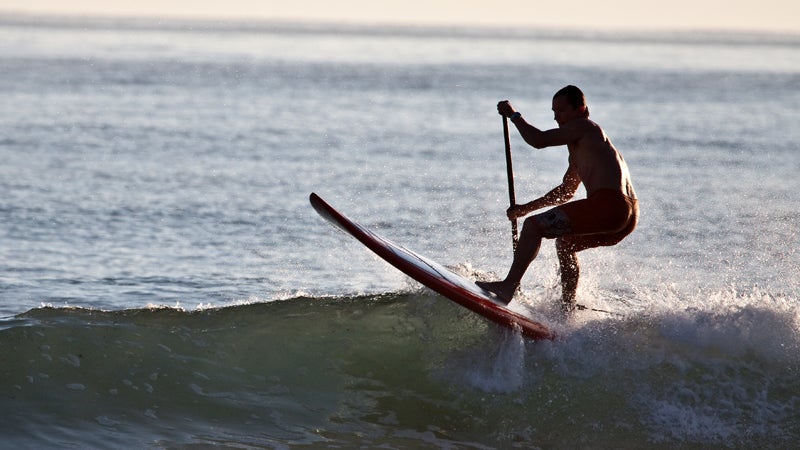Whether you’re navigating gnarly river rapids, cruising the harbor at sunset, or stroking into a head-high set, we’ve got you covered with this stand-up paddleboard quiver.
Most Powerful: iSUP CMac All-Terrain Board ($1,350)
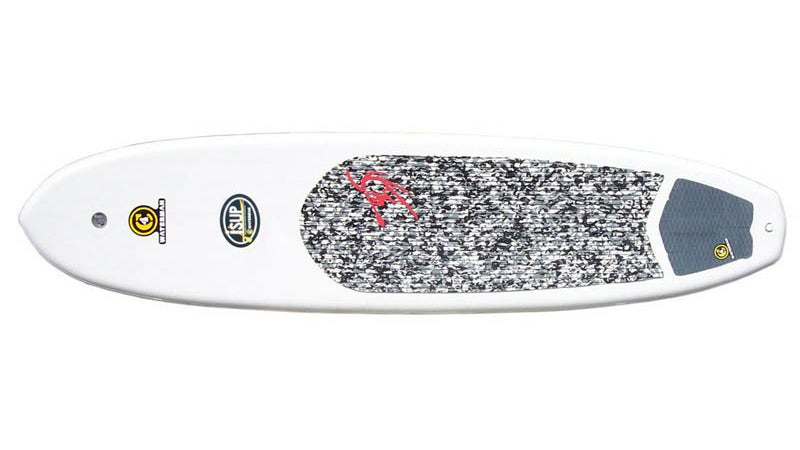
Best for: Beginners and intermediates up to 220 pounds
Length: 10’6” Width: 30.0” Thickness: 4.0” Weight: 22.8 lbs Volume: 158L Fins: Thruster/Cuttlefish Box
Part surfboard, part whitewater kayak, part skateboard, the combines innovative shape and rocker profiles with great packability and durability. The first SUP designed specifically for whitewater paddling by pro rider Charlie MacArthur (C-Mac), it doesn’t have the ocean performance of some of the other boards I rode, but it easily conquered the rapids of the Colorado River.
While initially skeptical of inflatables, I was impressed by the CMac’s burly construction. Heavy-duty military-grade PVC, stitched seams, and thousands of cilia fibers form a Rigid AirCore and anchor the deck to the bottom. This makes the CMac feel incredibly sturdy underfoot—but I could still bounce it off rocks and recover easily, with zero damage.
The CMac comes with the new Cuttlefish fin system, which allowed me to swap fins based on water conditions. While it’s easy to inflate the board in less than ten minutes with the high-pressure pump it comes with, I’d suggest upgrading to an electric pump if you’re traveling with multiple boards.
I’d also recommend upgrading to CMac River Fins. Made of low-aspect polypropylene, they’re perfect for waterways with rocks, reefs, or sandbars; the brightly colored fins are designed to pull out and float to the surface if there’s a crash or collision.
Most Versatile: BK Pro 10’11 ($1,390)
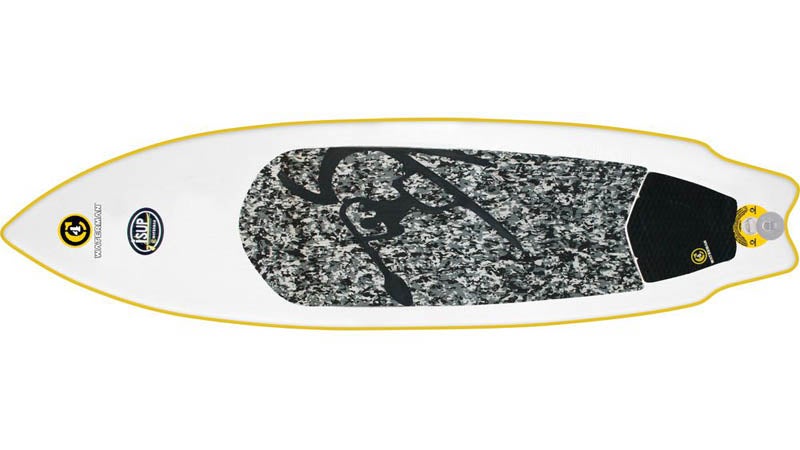
Best for: Beginners to experts up to 275 pounds
Length: 10’11” Width: 33.5 Thickness: 6.0 Weight: 25 lbs Volume: 275L Fins: Thruster/Cuttlefish Box
The also delivers performance in spades. This is the ultimate beginner river board, and the best thing about it is that it doesn’t look or feel like it’s for beginners. The BK has enough heft to be used as a touring board and provides plenty of room to balance your camping gear, or even your dog. The board never felt in danger of getting shaky in the rapids, and was even fun to paddle through the flat sections.
Additionally, progressive rocker let me pull easily into river waves, and the board surfs well thanks to the kicked-up nose, which prevents it from purling. Following a C4 Waterman trend, the board is more stable than the Rapid Rider and the CMac. The swallowtail design helped me turn on a dime, but the board does move slightly slower than the other two, making it more suitable for beginners.
Most High-Performance: iSUP Rapid Rider ($1,350)
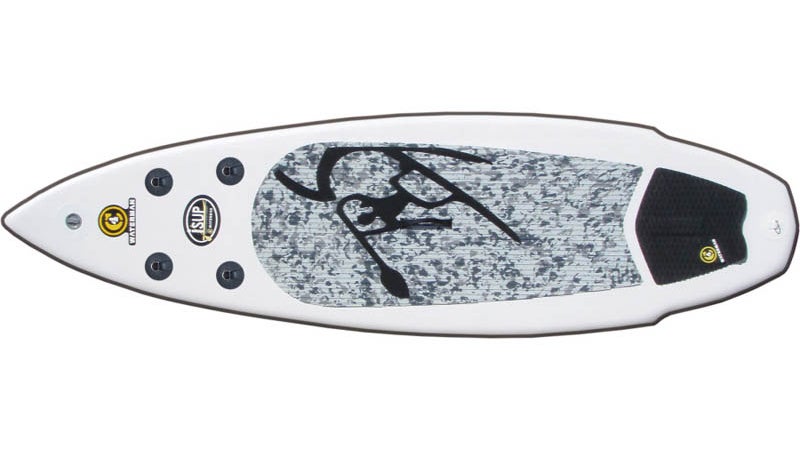
Designed For: Intermediates and experts up to 220 pounds
Length: 10’ Width: 34.0 Thickness: 5.0 Weight: 24 lbs Volume: 170L Fins: Thruster/Cuttlefish Box
If you’ve mastered the CMac and want to take a shot at really hanging ten on a river, this is the necessary tool of the trade. The has a wide midline for extremely quick turns, as well as a narrow nose to pierce through waves and reduce swing weight. I found this board extremely easy to spin, and it was in its element carving river swells.
The added width and unique shape provided unparalleled stability when needed, and I found the board dexterous in tricky currents and at low planing speeds. An extreme river machine.
Most Seaworthy: 9’2 NPS Coco Mat Surf ($1,670)
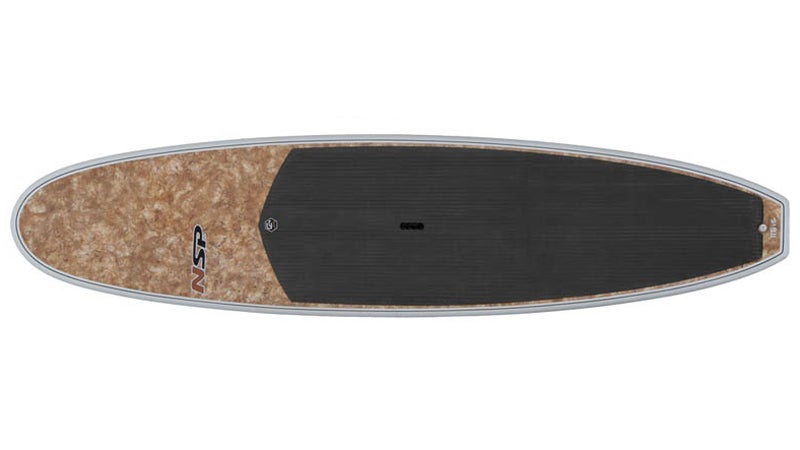
Best for: Intermediates to experts up to 180 pounds
Length: 9’2” Width: 29.5’ Thickness: 4 1/8 Weight: 8.48 kgs Volume: 126 L Fins: Quad Plus Box
This board inspired yells of excitement when paddled into a waist-high roller off Nantucket Island. The is a high-performance board, best for experienced surfers and paddlers. While the nose width allows for stability in side-shore bump, the rolled deck and midrail set you up for ultimate wave responsiveness, but the shape does decrease stability.
One thing I loved about this board is the unique NPS Coco Mat construction: the board’s core is made of coconut fibers that boast an insanely efficient strength-to-weight ratio. Aesthetically, this was the coolest-looking board I tested—the visible fibers create a marbling effect.
If you’re a seasoned flat-water paddler looking to get into the surf side of things and want to add a SUP to your quiver that’s über-light, this is the board for you.
Most Radical: NSP DC Surf 8’2 ($1,650)
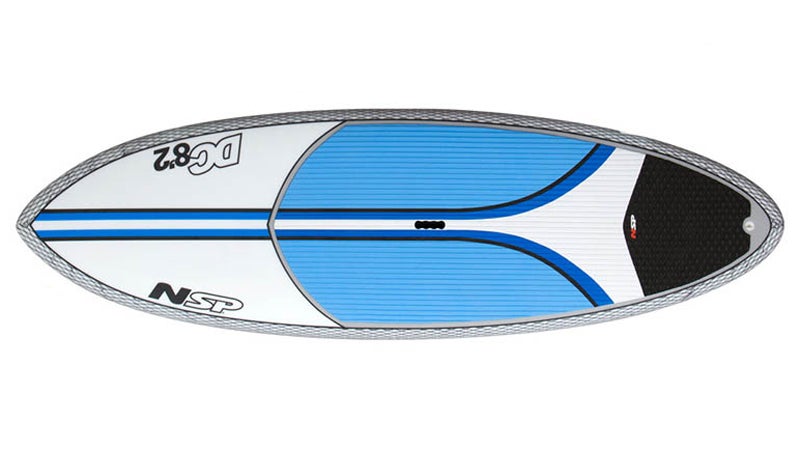
Best for: Experts up to 200 pounds
Length: 8’2” Width: 29.5’ Thickness: 4 Weight: 7.46 kgs Volume: 110L Fins: Fiberglass Center Fin and Nylon Sides Included
This board is specifically designed to paddle into and rip apart ocean waves. However, I found the to be surprisingly well balanced for a dedicated surfboard that’s not really meant for flat water. The 8’2 is compact and advanced, perfect for waist-to-head surf.
I caught some really fun peelers on this shredder, but you should only think about this board if you’re a veteran SUP wave-rider and not just a weekend warrior.
Most Family-Friendly: NPS ���ϳԹ��� Series, 11’0 ���ϳԹ��� Explorer ($1,150)

Designed For: Beginners to intermediates up to 210 pounds
Length: 11’ Width: 30’ Thickness: 6 Weight: 7.46 kgs Volume: 223L Fins: 10’ Single Fin
I loved for its simplicity. It’s a mellow, super stable, flat-bottomed cruiser that’s a great deal for the money.
I paddled this cruiser effortlessly though Nantucket’s Hummock Pond, enjoying its ease of use and ability to work up speed. The Explorer has a “displacement” shape that’s designed to cut through the water, and I immediately noticed that the deck feels low, giving riders more control by placing them closer to the water’s surface. The board also has extra storage room up front, which I used for cold beer and sandwiches.
Ride this on your lazy days—just make sure you have another board to paddle out when the swell hits or the river rises.


